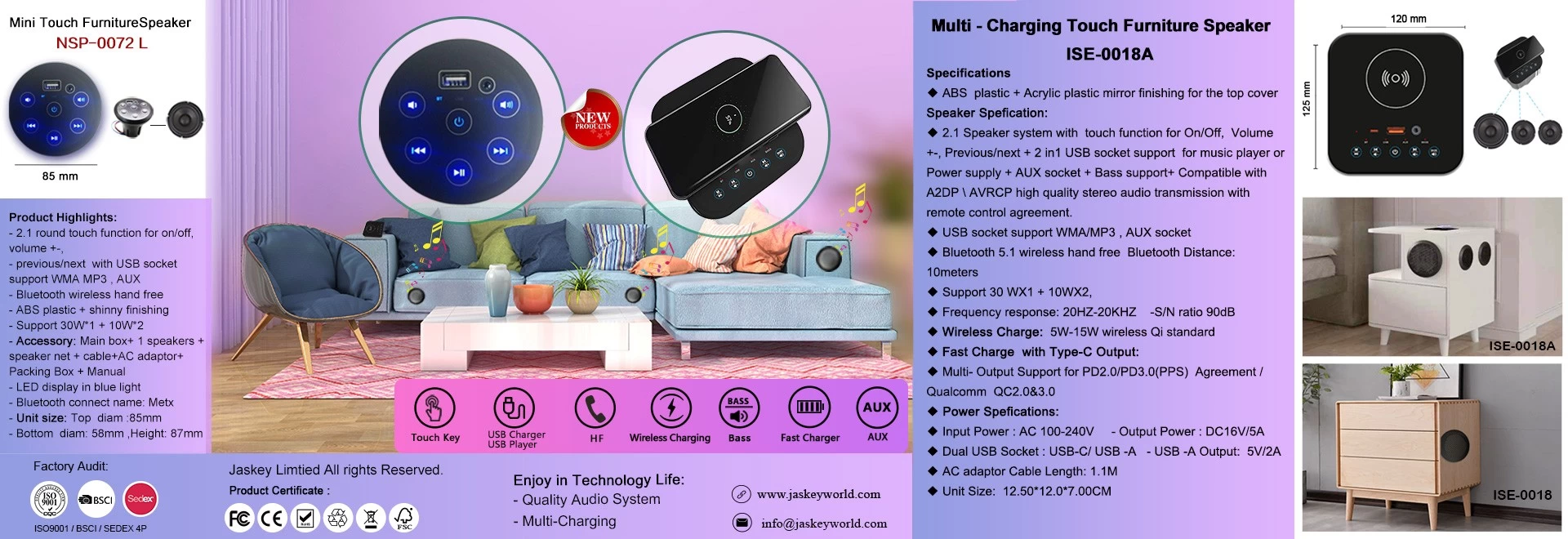What is the effect of mini wireless speaker noise ratio on sound quality?
Signal noise ratio is recognized as the mini wireless speaker industry to measure the quality of mini wireless speaker equipment is an important indicator of quality, almost all of the electro-acoustic equipment will be marked with this indicator, there is no indicator of the equipment, or some special equipment special equipment, or is not regular products.
SNR, the English name is called SNR or S / N (SIGNAL-NOISE RATIO), also known as the signal to noise ratio. Is the ratio of signal to noise in an electronic mini wireless speaker or electronic system. The signal inside is the electronic signal from the outside of the mini wireless speaker that needs to be processed by this mini wireless speaker. The noise is an irregular extra signal (or information) that is not present in the original signal generated after passing through the device. The signal does not change with the original signal changes.
The signal-to-noise ratio is measured in dB, which is calculated as 10lg (PS / PN), where Ps and Pn represent the effective power of the signal and noise, respectively, and can be converted into the voltage amplitude ratio: 20Lg (VS / VN) , Vs and Vn represent the "rms" of the signal and the noise voltage, respectively. In an mini wireless speaker amplifier, it is desirable that the amplifier should not add anything other than amplify the signal. Therefore, the signal-to-noise ratio should be as high as possible.
Narrow sense refers to the amplifier output signal power and the noise power output at the same time, often with the decibels, the higher the signal to noise ratio of the equipment that it produces less noise. In general, the greater the signal to noise ratio, indicating mixed in the signal in the noise, the sound quality of the higher the playback, or vice versa. SNR generally should not be less than 70dB, high-fidelity mini wireless speaker signal to noise ratio should reach more than 110dB.
Signal to noise ratio is not a fixed value, it should change with the input signal changes, if the noise is fixed, obviously the higher the input signal amplitude, the higher the signal to noise ratio. Obviously, this changing parameter can not be used as a measure, to make it a measure, it must become a fixed value. Thus, as a parameter of the equipment, the signal-to-noise ratio is defined as the ratio of signal to noise at the maximum undistorted output power of the device, so that the measurement of the signal-to-noise ratio of all the mini wireless speakers is united. Under the same measurement conditions were compared. Signal to noise ratio is usually not directly measured, but by measuring the amplitude of the noise signal conversion out, the usual method is: to the amplifier a standard signal, usually 0.775Vrms or 2Vp-p @ 1kHz, adjust the amplifier magnification (The distortion is determined by the manufacturer, usually 10% or 1%), write down the output amplitude of the amplifier at this time, and then remove the input signal to measure the noise present at the output at this time Voltage, recorded as Vn, and then according to SNR = 20lG (Vs / Vn) can calculate the signal to noise ratio. Ps and Pn are the effective power of the signal and noise, respectively. The signal ratio can also be calculated from SNR = 10lg (Ps / Pn).











